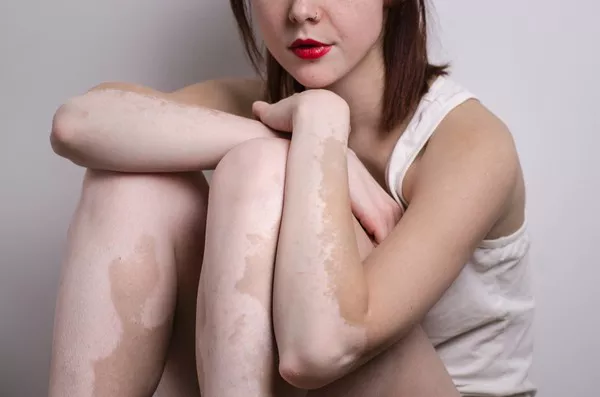Hidradenitis Suppurativa (HS) is a chronic inflammatory skin condition that affects the sweat glands and hair follicles. Often misunderstood, this condition is frequently mistaken for a bacterial infection due to its appearance and the presence of abscesses and pus-filled lesions. However, contrary to popular belief, HS is not caused by bacteria, nor is it contagious. In this article, we delve into the nature of Hidradenitis Suppurativa, its symptoms and impacts, available treatment options, and resources for support.
Nature of Hidradenitis Suppurativa
HS manifests as painful bumps, nodules, abscesses, and tunnels under the skin, typically occurring in areas where skin rubs together, such as the armpits, groin, and buttocks. These lesions can be debilitating, causing significant discomfort and impacting daily life.
It’s essential to clarify that HS is not a bacterial infection. While bacterial colonization may occur within the affected lesions, it is not the primary cause of the condition. HS is not contagious, and it is not a result of poor hygiene practices.
The exact cause of HS remains elusive, but it is believed to be multifactorial, involving a combination of genetic predisposition, hormonal factors, and immune system dysfunction. Individuals with a family history of HS are more likely to develop the condition, suggesting a genetic component. Hormonal fluctuations, particularly in women, can exacerbate symptoms, indicating a hormonal influence. Additionally, abnormalities in the immune system’s response to inflammation may contribute to the development and progression of HS.
Symptoms and Impacts of HS
The symptoms of HS can vary in severity and frequency, but they commonly include:
- Painful lumps or bumps under the skin
- Nodules or cysts that may rupture and drain pus
- Formation of tunnels under the skin (sinus tracts)
- Scarring and thickened skin in affected areas
These symptoms can significantly impact an individual’s quality of life. The chronic pain and discomfort associated with HS can limit mobility and interfere with daily activities such as walking, sitting, or exercising. Moreover, the visible nature of the lesions can lead to self-consciousness and negatively affect mental health and self-esteem.
Treatment Options for HS
While there is currently no cure for HS, several treatment modalities aim to manage symptoms, reduce inflammation, and improve overall quality of life. Treatment approaches may vary depending on the severity of the condition and individual response. Some common treatment options include:
- Medication: Antibiotics may be prescribed to reduce bacterial colonization and control infection within the lesions. Hormonal therapy, such as oral contraceptives or anti-androgens, can help regulate hormone levels and decrease inflammation. Biologic medications, such as TNF-alpha inhibitors, target specific components of the immune system to reduce inflammation and prevent lesion formation.
- Lifestyle Changes: Avoiding tight-fitting clothing, maintaining a healthy weight, and practicing good hygiene can help manage symptoms and prevent flare-ups. Smoking cessation may also be recommended, as smoking has been linked to worsening HS symptoms.
- Wound Care: Proper wound care is essential for preventing infection and promoting healing. This may include gentle cleansing of affected areas, applying warm compresses, and using topical treatments to reduce inflammation and pain.
- Surgical Procedures: In severe cases of HS that do not respond to conservative treatments, surgical intervention may be necessary. Surgical options may include drainage of abscesses, excision of affected tissue, or procedures to remove scar tissue and reconstruct the affected area.
Resources and Support
For individuals living with HS, accessing reliable information and support networks is crucial. There are several reputable resources available, including:
1. HS Foundations: Organizations dedicated to raising awareness, funding research, and providing support for individuals affected by HS. Examples include the Hidradenitis Suppurativa Foundation and the European Hidradenitis Suppurativa Foundation.
2. Dermatology Associations: Professional associations of dermatologists often provide resources and educational materials on various skin conditions, including HS. Examples include the American Academy of Dermatology and the European Academy of Dermatology and Venereology.
3. Support Groups: Online and in-person support groups offer individuals living with HS the opportunity to connect with others facing similar challenges, share experiences, and exchange advice and coping strategies.
Conclusion
In conclusion, Hidradenitis Suppurativa is a chronic inflammatory skin condition that affects millions of people worldwide. Despite its resemblance to bacterial infections, HS is not caused by bacteria and is not contagious. Understanding the nature of HS, its symptoms, treatment options, and available resources is essential for effectively managing the condition and improving quality of life for those affected. If you suspect you may have HS or are struggling to manage symptoms, it’s important to consult a dermatologist for proper diagnosis and personalized treatment recommendations.
Related Topics:
Does Hidradenitis Suppurativa Get Worse with Age?


























